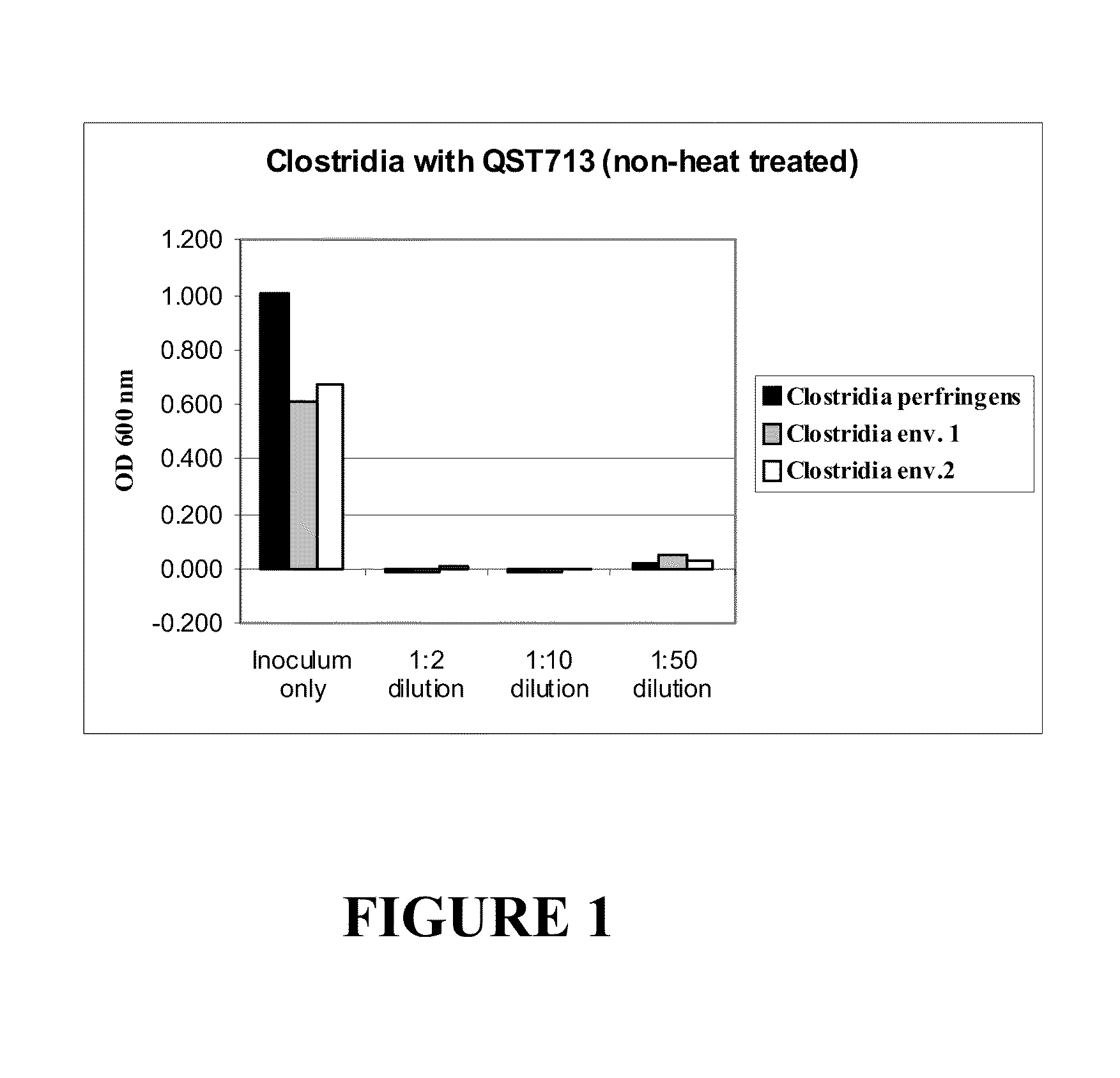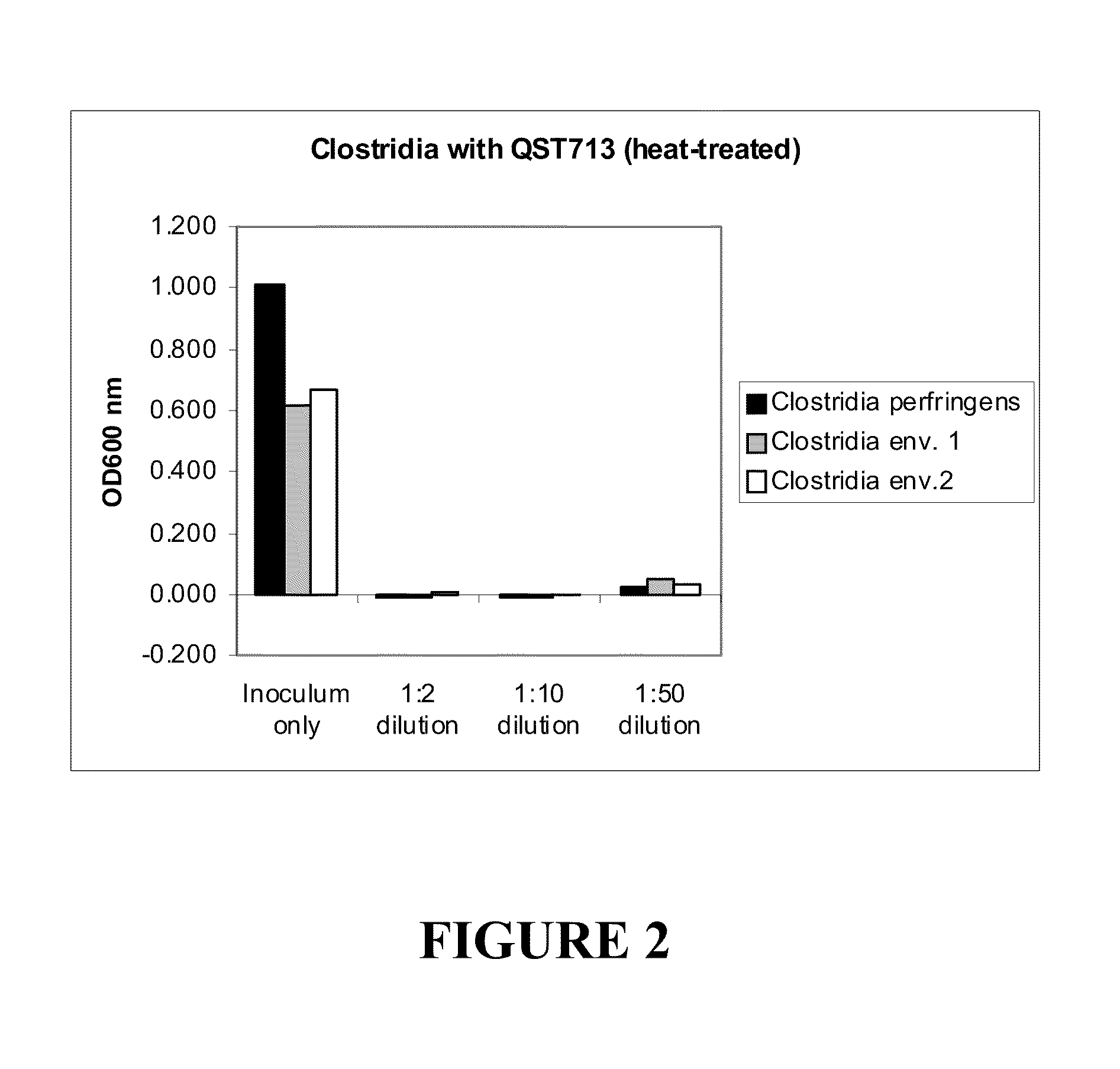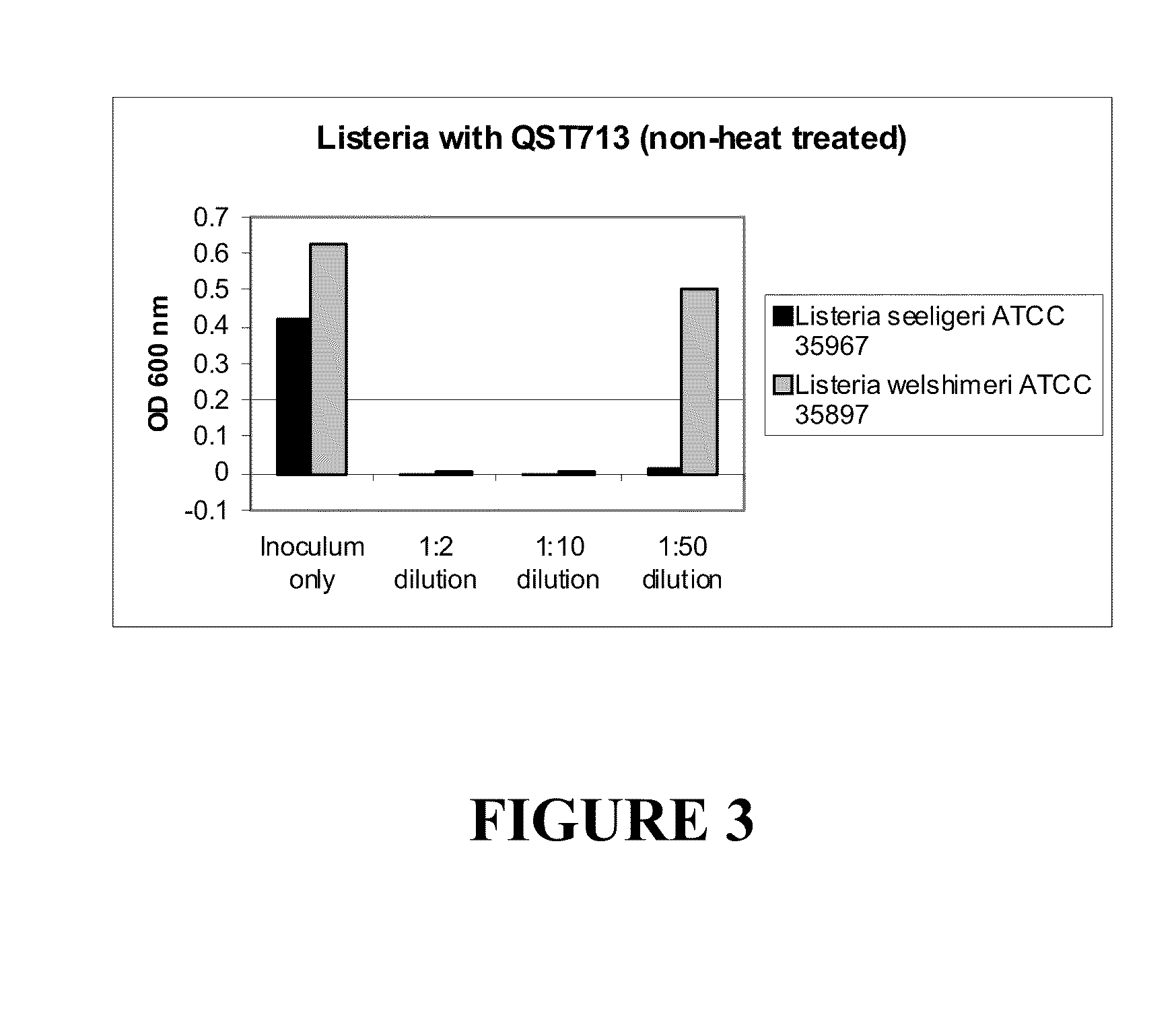Method For Using A Bacillus Subtilis Strain To Enhance Animal Health
a technology of bacillus subtilis and enhancing animal health, which is applied in the field of probiotics, can solve the problems that not all strains of bacillus subtilis are effective feed additives, and achieve the effect of enhancing animal health
- Summary
- Abstract
- Description
- Claims
- Application Information
AI Technical Summary
Benefits of technology
Problems solved by technology
Method used
Image
Examples
example 1
In Vitro Studies of Efficacy of QST713 Cell-Free Preparations Against Animal
Pathogens
[0054]Cell-free preparations of QST713 were tested for antimicrobial activity against Clostridia (Clostridia perfringens ATCC 13124 and two environmental isolates of Clostridia perfringens); Listeria (Listeria moncytogenes ATCC 19116 and 19111, Listeria seeligeri ATCC 35968 and Listeria welshimeri ATCC 35897); Salmonella (Salmonella enterica ATCC 10398, Salmonella arizonae ATCC 13314 and Salmonella bongori ATCC 43975); and E. coli, using Kirby-Bauer and minimal inhibitory concentration (MIC) techniques.
[0055]Cell-free preparations were prepared by growing QST713 in media corresponding to media in which the target pathogen was grown, as shown in Table 1, below, centrifuging the culture for 15 minutes at 3000 rpm at 23 C and filtering it through a 0.45 μm Nalgene filter unit. To test for heat stability, a portion of the cell-free preparation was heated to 50° C. for one hour before each of the Kirby-B...
example 2
In Vitro Studies of Efficacy of QST713 Against Various Bacteria
[0058]A powder formulation of Bacillus subtilis QST713 was tested for efficacy against various environmental isolates of the following bacteria: Clostridium perfringens, Escherichia coli, Samonella enteritidis, Campylobacter jejuni, and Listeria monocytogenes. This powder formulation was prepared by fermenting Bacillus subtilis QST713, concentrating the fermentation broth, and drying, as described above in the Detailed Description of Invention. It had 14.6% concentrated, dried broth and 85.4% formulation inerts (chosen from the possibilities described above) and contained at a minimum approximately 7.3×109 CFU Bacillus subtilis / gram and at a maximum approximately 1×1010 CFU Bacillus subtilis / gram. This formulation shall be referred to herein as Composition 1. Stock solutions of Composition 1 were prepared by adding 0.2 gram of the formulated powder to 1.8 ml of sterile distilled water, such that the solution contained ro...
example 3
In Vivo Studies of QST713 in Broilers
[0059]Composition 1 was added to starter and finisher diets of broiler chickens and weight gain and feed efficiency observed. 252 Jumbo Cornish Cross broiler chicks were randomly separated into four groups and fed one of the diets listed below.[0060]Basal diet only—control[0061]Basal diet +0.05% CALSPORIN® (0.5 g / kg; 106 CFU / g) (designated as CS in the table below)[0062]Basal diet +0.05% Composition 1 (0.5 g / kg; 106 CFU / g) (designated as Comp. 1-106 in the table below)[0063]Basal diet +0.0005% Composition 1 (0.5 mg / kg; 103 CFU / g) (designated as Comp. 1-103 in the table below)
[0064]The basal diet consisted of the following starter diet for days 1-22 and the following finisher diet for days 22-42.
TABLE 4Ingredient composition of starter (d 1 to 21) and finisher(d 22 to 42) basal diets for broiler chickensIngredient, %StarterFinisherCorn45.649.2Soybean meal (48% CP)23.516.8Distillers dried grains5.05.0Corn gluten meal2.04.0Fish meal1.02.5Alfalfa mea...
PUM
| Property | Measurement | Unit |
|---|---|---|
| molecular weight | aaaaa | aaaaa |
| molecular weight | aaaaa | aaaaa |
| molecular weight | aaaaa | aaaaa |
Abstract
Description
Claims
Application Information
 Login to View More
Login to View More - R&D
- Intellectual Property
- Life Sciences
- Materials
- Tech Scout
- Unparalleled Data Quality
- Higher Quality Content
- 60% Fewer Hallucinations
Browse by: Latest US Patents, China's latest patents, Technical Efficacy Thesaurus, Application Domain, Technology Topic, Popular Technical Reports.
© 2025 PatSnap. All rights reserved.Legal|Privacy policy|Modern Slavery Act Transparency Statement|Sitemap|About US| Contact US: help@patsnap.com



